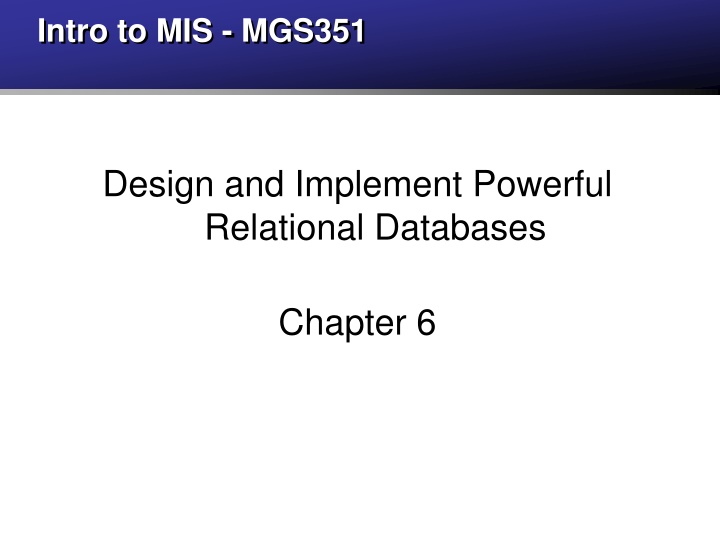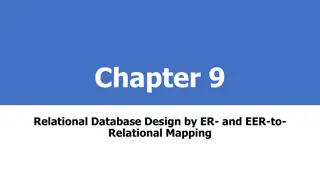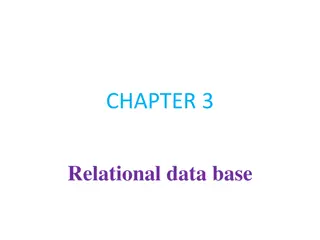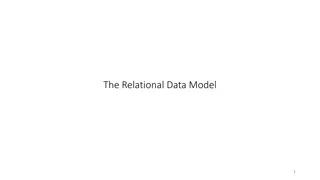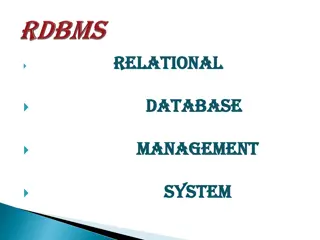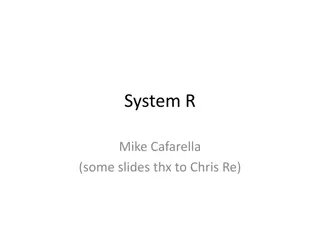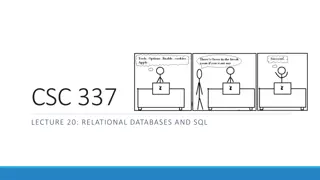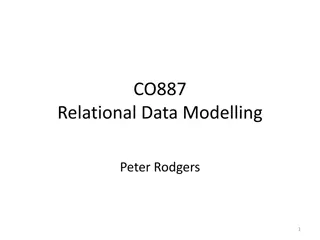Design and Implement Powerful Relational Databases - Chapter 6 Overview
This chapter provides insights into establishing relationships in databases, ensuring referential integrity, handling errors, and utilizing subforms. Learn about setting primary and foreign keys, enforcing referential integrity, and using subforms efficiently to display related data.
Download Presentation

Please find below an Image/Link to download the presentation.
The content on the website is provided AS IS for your information and personal use only. It may not be sold, licensed, or shared on other websites without obtaining consent from the author.If you encounter any issues during the download, it is possible that the publisher has removed the file from their server.
You are allowed to download the files provided on this website for personal or commercial use, subject to the condition that they are used lawfully. All files are the property of their respective owners.
The content on the website is provided AS IS for your information and personal use only. It may not be sold, licensed, or shared on other websites without obtaining consent from the author.
E N D
Presentation Transcript
Intro to MIS - MGS351 Design and Implement Powerful Relational Databases Chapter 6
Chapter Overview Database Relationships Referential Integrity Cascade Update and Delete Subforms Helpful Access Utilities
Database Relationships Tables should be related on primary and foreign keys with similar data and compatible data types. Set relationships BEFORE entering data in the tables. Click Database Tools Ribbon, click Relationships button
Compatible Data Types Primary Key Foreign Key Short Text 1--- __________ Number 1--- __________ Date 1--- __________ AutoNumber 1--- __________
Errors in Relationships Caused by one of three things: 1) Primary and/or foreign keys aren t set properly in the table design 2) Data already exists in table(s) that violates referential integrity 3) Data types of related fields are incompatible or incorrect
Relationship Options Referential Integrity - Ensures that related records in a database are consistent. Generally a good idea to enforce this option. When enforced, relationship line indicates 1 and . Cascade Update & Cascade Delete
Subforms A form within a form Displays data on one form from related tables Can have subforms within subforms (nested) and multiple subforms on a single form
Access Utilities Compact & Repair Database shrinks size of database. Access database files NEVER decrease in size unless compacted. Should do this before emailing a database file. Click File Menu, Compact & Repair Database Button
External Data Can be used to import data from other files (Excel, text) or link existing database tables. ODBC link allows you to connect to non- Access databases such as Oracle.
Quick Review Which is the appropriate pairing for setting relationships? a. Short Text PK Hyperlink FK b. AutoNumber PK Number FK c. Date PK Short Text FK d. None of the above
Quick Review A 1--- relationship exists between Physicians and Patients. Which is True? a. Physician ID will appear in the Patients table b. Patient ID will appear in the Physicians table c. Both (a) or (b) d. Neither (a) or (b)
Quick Review Which of the following will remove the relationship between tables? a. Click the join line connecting the two tables and press the Del key b. Double click the join line c. Click the join field and press Del d. All of the above
Quick Review Every table in an Access database a. Must be related to every other table b. Must have one or more foreign keys c. Both (a) and (b) d. Neither (a) nor (b)
Quick Review Which of the following is true? a. A main form may contain multiple subforms b. A subform may contain another subform c. Both (a) and (b) d. Neither (a) nor (b)
Quick Review True / False When creating relationships between tables in Access, you must relate the tables on fields with the same data types.
Homework 4 Chapter 6 Guided Exercise Chapter 6 Applied Exercise
